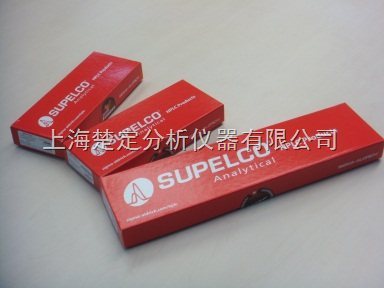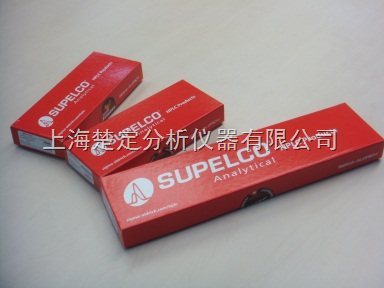推荐厂家
暂无
暂无
 留言咨询
留言咨询
 留言咨询
留言咨询
 400-860-5168转3844
400-860-5168转3844
 留言咨询
留言咨询
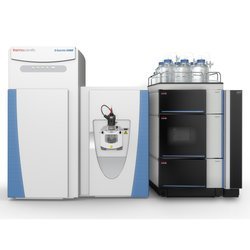
 400-611-9236
400-611-9236
 留言咨询
留言咨询
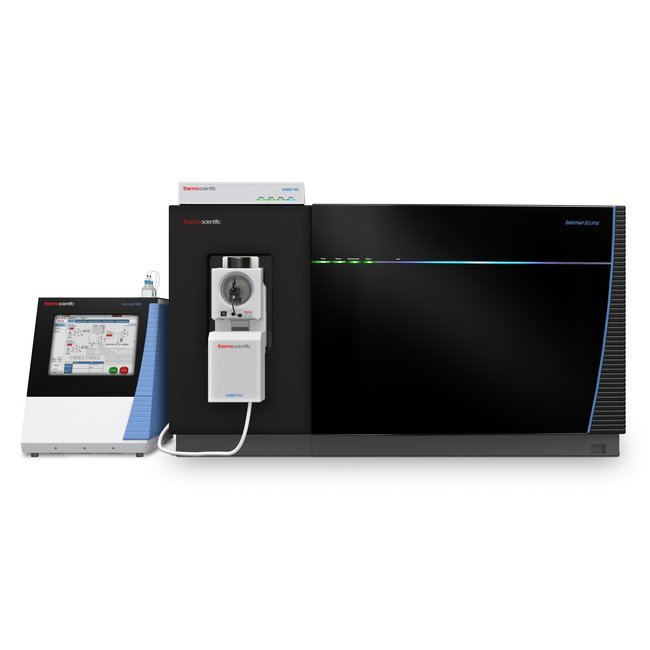
 400-611-9236
400-611-9236
 留言咨询
留言咨询

 400-801-8117
400-801-8117
 留言咨询
留言咨询
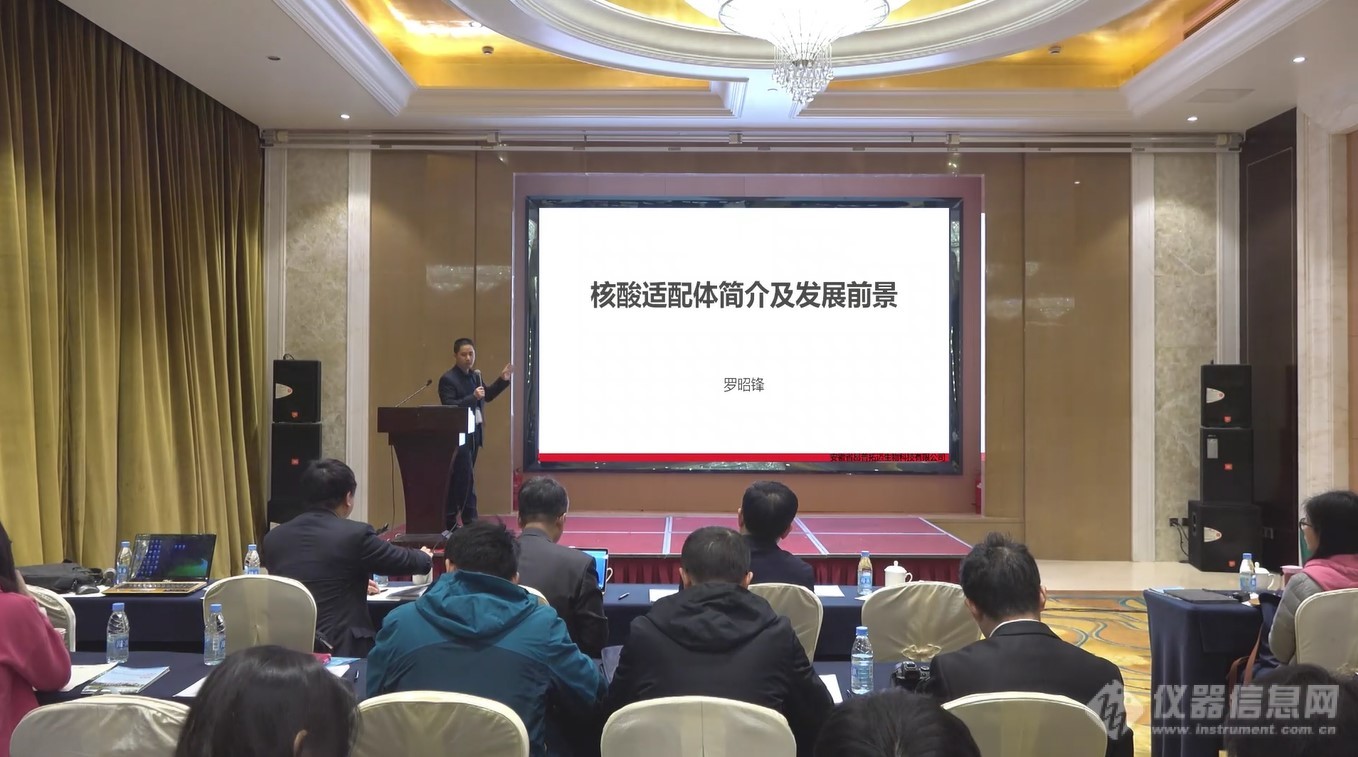


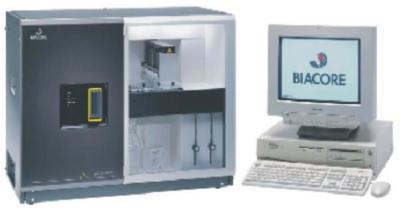
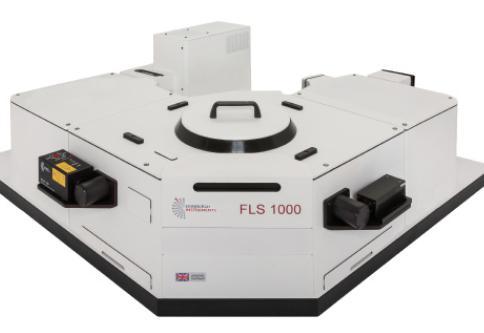
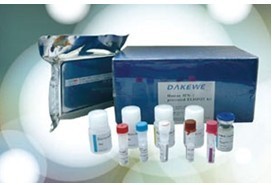
配位化学中的有机金属配合物的合成需要有机配体和金属离子。有机配体多种多样,双齿多齿的,如:4,4'-bipy,等,金属离子一般用过渡金属的和稀土离子,这样形成单核、双核、或多核0D\1D\2D\3D等的配位聚合物。还可以形成纳米体系的金属聚合物体系。配位聚合物一般由水热和溶剂热法得到单晶,然后经过xrd得到它的结构,进而测出它的性质。值得一提的是,形成的配位聚合物往往会是非常美观的的结构,拓扑结构等等。关键是要选择配体和金属离子,推出它们结合的方式,会得到怎样的结构,又怎样的新颖性。因而,在原有的简单配体上,合成新的配体非常重要和有必要。这就跟有机合成有点关系,看怎样能合成新型的配体应用于配位当中,进而产生更多结构和性质新颖的配位聚合物!

[align=center][font='黑体'][size=29px]双配体锌配合物的结构表征[/size][/font][/align][font='宋体'][size=12px]摘要:[/size][/font][font='宋体'][size=12px]本文合成了一种锌的混配配合物:[[/size][/font][font='times new roman'][size=12px]Zn(4-ABS)(phen)[/size][/font][font='times new roman'][size=12px]([/size][/font][font='times new roman'][size=12px]H[/size][/font][font='times new roman'][sub][size=12px]2[/size][/sub][/font][font='times new roman'][size=12px]O[/size][/font][font='times new roman'][size=12px])[/size][/font][font='times new roman'][size=12px]][/size][/font][font='times new roman'][size=12px]ClH[/size][/font][font='times new roman'][sub][size=12px]2[/size][/sub][/font][font='times new roman'][size=12px]O[/size][/font][font='times new roman'][size=12px]。[/size][/font][font='宋体'][size=12px]利用[/size][/font][font='宋体'][size=12px]红外光谱([/size][/font][font='times new roman'][size=12px]IR[/size][/font][font='宋体'][size=12px])、荧光光谱([/size][/font][font='times new roman'][size=12px]FL[/size][/font][font='宋体'][size=12px])[/size][/font][font='宋体'][size=12px]、紫外光谱([/size][/font][font='times new roman'][size=12px]UV[/size][/font][font='宋体'][size=12px])[/size][/font][font='宋体'][size=12px]和热重分析([/size][/font][font='times new roman'][size=12px]TG/DTG[/size][/font][font='宋体'][size=12px])[/size][/font][font='宋体'][size=12px]等测试手段对[/size][/font][font='宋体'][size=12px]该[/size][/font][font='宋体'][size=12px]配合物进行表征,结果表明过渡金属锌离子分别与[/size][/font][font='宋体'][size=12px]对氨基苯磺酸[/size][/font][font='宋体']上[/font][font='宋体'][size=12px]的[/size][/font][font='times new roman'][size=12px]1[/size][/font][font='宋体'][size=12px]个[/size][/font][font='times new roman'][size=12px]O[/size][/font][font='宋体'][size=12px]、[/size][/font][font='宋体'][size=12px]邻[/size][/font][font='宋体'][size=12px]菲罗啉上的[/size][/font][font='times new roman'][size=12px]2[/size][/font][font='宋体'][size=12px]个[/size][/font][font='times new roman'][size=12px]N[/size][/font][font='宋体'][size=12px]和[/size][/font][font='times new roman'][size=12px]1[/size][/font][font='宋体'][size=12px]个[/size][/font][font='times new roman'][size=12px]H[/size][/font][font='times new roman'][sub][size=12px]2[/size][/sub][/font][font='times new roman'][size=12px]O[/size][/font][font='宋体'][size=12px]配位。[/size][/font][font='宋体'][size=12px]关键词:[/size][/font][font='宋体'][size=12px]混配[/size][/font][font='宋体'][size=12px];表征手段;谱图解析[/size][/font][font='黑体']1.[/font][font='黑体']实验原理[/font][font='宋体']红外光谱是研究分子振动和转动信息的十分有力的分析手段,能够反映出分子化学键的特征吸收频率;热重分析是一种热分析技术,在程序控制升温下,通过测量样品的失重变化,探究样品的热稳定性及其组分;紫外可见光谱研究[/font][font='宋体']特定波长或一定波长范围内物质对光的吸收度,可用于定性或定量分析[/font][font='宋体'];荧光发射光谱是在一定波长的激发下,物质发出的[/font][font='宋体']荧光强度在不同波长的分布情况[/font][font='宋体']。[/font][font='黑体']2.[/font][font='黑体']实验仪器[/font][font='times new roman']布鲁克[/font][font='times new roman']Tensor 27[/font][font='times new roman']傅里叶红外光谱仪[/font][font='times new roman'](KBr[/font][font='times new roman']压片法,[/font][font='times new roman']4000[/font][font='times new roman']~[/font][font='times new roman']400 cm[/font][font='times new roman'][sup][size=13px]-1[/size][/sup][/font][font='times new roman'] )[/font][font='times new roman'];北京恒久[/font][font='times new roman']HTG-1[/font][font='times new roman']热重分析仪[/font][font='times new roman'],测定条件为空气气氛,升温速率为[/font][font='times new roman']10℃min[/font][font='times new roman'][sup][size=13px]-1[/size][/sup][/font][font='times new roman'],终点温度为[/font][font='times new roman']800[/font][font='times new roman']℃;紫外光谱采用岛津[/font][font='times new roman']UV-2600[/font][font='times new roman']紫外可见分光光谱仪;荧光光谱采用日立[/font][font='times new roman']F[/font][font='times new roman']70[/font][font='times new roman']00[/font][font='times new roman']型荧光分光光谱仪,在室温下测定(激发狭缝和发射狭缝均为[/font][font='times new roman']2 nm[/font][font='times new roman'],扫描速率[/font][font='times new roman']600 nm/min)[/font][font='times new roman']。[/font][font='黑体']3.[/font] [font='黑体']谱图解析[/font][font='黑体'][color=#000000]3.1 [/color][/font][font='黑体']红外光谱[/font][align=center][img]https://ng1.17img.cn/bbsfiles/images/2022/11/202211161501457322_9243_5853070_3.jpeg[/img][/align][align=center][font='times new roman'][size=12px]图[/size][/font][font='times new roman'][size=12px]1.[/size][/font][font='times new roman'][size=12px]配合物的红外吸收光谱[/size][/font][/align][align=center][font='times new roman'][size=12px]Fig.1 IR spectrum ofcoordinationcompound[/size][/font][/align][font='times new roman']配合物的红外光谱以KBr为基质,4000~400 cm[/font][font='times new roman'][sup][size=13px]-[/size][/sup][/font][font='times new roman'][sup][size=13px]1[/size][/sup][/font][font='times new roman']范围内测定(如图1)。根据文献中图谱对照解析,配位化合物的IR谱图的主要吸收峰为:3463[/font][font='times new roman'],[/font][font='times new roman']1624,1599,1516,1427,1122,1049[/font][font='times new roman'] [/font][font='times new roman']cm[/font][font='times new roman'][sup][size=13px]-[/size][/sup][/font][font='times new roman'][sup][size=13px]1[/size][/sup][/font][font='times new roman']。分别作如下指派:1624,1599,1427[/font][font='times new roman'] [/font][font='times new roman']cm[/font][font='times new roman'][sup][size=13px]-[/size][/sup][/font][font='times new roman'][sup][size=13px]1[/size][/sup][/font][font='times new roman']为苯环的特征吸收峰;3463[/font][font='times new roman'] [/font][font='times new roman']cm[/font][font='times new roman'][sup][size=13px]-[/size][/sup][/font][font='times new roman'][sup][size=13px]1[/size][/sup][/font][font='times new roman']为对氨基苯磺酸配体上-NH[/font][font='times new roman'][sub][size=13px]2[/size][/sub][/font][font='times new roman']的伸缩振动,1122、1049[/font][font='times new roman'] [/font][font='times new roman']cm[/font][font='times new roman'][sup][size=13px]-[/size][/sup][/font][font='times new roman'][sup][size=13px]1[/size][/sup][/font][font='times new roman']为对氨基苯磺酸配体上-SO[/font][font='times new roman'][sub][size=13px]3[/size][/sub][/font][font='times new roman']基团的不对称伸缩振和对称伸缩振动,1516[/font][font='times new roman'] [/font][font='times new roman']cm[/font][font='times new roman'][sup][size=13px]-[/size][/sup][/font][font='times new roman'][sup][size=13px]1[/size][/sup][/font][font='times new roman']为邻菲罗啉配体[/font][font='times new roman']C[/font][font='times new roman']-N的伸缩振动峰,724-843[/font][font='times new roman'] [/font][font='times new roman']cm[/font][font='times new roman'][sup][size=13px]-[/size][/sup][/font][font='times new roman'][sup][size=13px]1[/size][/sup][/font][font='times new roman']为邻菲罗啉配体上苯环面外的碳氢键的弯曲振动吸收峰。[/font] [font='times new roman']经与文献中[/font][font='times new roman']配体[/font][font='times new roman']ABS、phen的标准[/font][font='times new roman']红外谱图对[/font][font='times new roman']照分析[/font][font='times new roman']可[/font][font='times new roman']知[/font][font='times new roman'],对氨基苯磺酸配体上-NH[/font][font='times new roman'][sub][size=13px]2[/size][/sub][/font][font='times new roman']伸缩振动峰没有发生位移,表明金属离子未与氨基氮配位。而对氨基苯磺酸配体上-SO[/font][font='times new roman'][sub][size=13px]3[/size][/sub][/font][font='times new roman']基团的特征吸收峰发生了位移(1122~1118[/font][font='times new roman'] [/font][font='times new roman']cm[/font][font='times new roman'][sup][size=13px]-[/size][/sup][/font][font='times new roman'][sup][size=13px]1[/size][/sup][/font][font='times new roman'],[/font][font='times new roman']1049~1034[/font][font='times new roman'] [/font][font='times new roman']cm[/font][font='times new roman'][sup][size=13px]-[/size][/sup][/font][font='times new roman'][sup][size=13px]1[/size][/sup][/font][font='times new roman']),邻菲罗啉上的[/font][font='times new roman']C-N[/font][font='times new roman']特征吸收峰发生了位移(1516~1587[/font][font='times new roman'] [/font][font='times new roman']cm[/font][font='times new roman'][sup][size=13px]-[/size][/sup][/font][font='times new roman'][sup][size=13px]1[/size][/sup][/font][font='times new roman']),归属于两[/font][font='times new roman']个[/font][font='times new roman']配体[/font][font='times new roman']参与锌离子[/font][font='times new roman']配位的结果[/font]。[font='黑体'][color=#000000]3.2 [/color][/font][font='黑体'][color=#000000]热重分析[/color][/font][align=center][img]https://ng1.17img.cn/bbsfiles/images/2022/11/202211161501459512_358_5853070_3.jpeg[/img][/align][align=center][font='times new roman'][size=12px]图[/size][/font][font='times new roman'][size=12px]2.[/size][/font][font='times new roman'][size=12px]配合物的热重曲线[/size][/font][/align][align=center][font='times new roman'][size=12px]Fig. 2 TGA of[/size][/font][font='times new roman'][size=12px] [/size][/font][font='times new roman'][size=12px]coordination[/size][/font][font='times new roman'][size=12px] [/size][/font][font='times new roman'][size=12px]compound[/size][/font][/align][font='times new roman']配合物的热重曲线如图[/font][font='times new roman']2[/font][font='times new roman']所示,由失重百分比推测,配合物在75[/font][font='宋体']℃开始[/font][font='times new roman']失去[/font][font='times new roman']2[/font][font='times new roman']个水[/font][font='times new roman']分子[/font][font='times new roman'],对应的[/font][font='times new roman']失重率为7.2[/font][font='times new roman']%[/font][font='times new roman']([/font][font='times new roman']理论值[/font][font='times new roman']为7.3[/font][font='times new roman']%[/font][font='times new roman']),实验值与理论值基本一致。[/font][font='times new roman']随后TG曲线在285℃[/font][font='times new roman']后[/font][font='times new roman']急剧下降,表明配合物[/font][font='times new roman']结构坍塌[/font][font='times new roman'];在560℃[/font][font='times new roman']后继续[/font][font='times new roman']下降,表明配合物继续分解[/font][font='times new roman'],[/font][font='times new roman']760℃之后曲线趋于平稳,此时残余[/font][font='times new roman']物重约[/font][font='times new roman']20.7%[/font][font='times new roman'],推测为ZnO(理论值16.6[/font][font='times new roman']%[/font][font='times new roman']),残余量高于理论值,原因可能与配合物含碳量较高而产生的积碳效应有关[/font][font='宋体'][sup][size=13px][[/size][/sup][/font][font='宋体'][sup][size=13px]5[/size][/sup][/font][font='宋体'][sup][size=13px]][/size][/sup][/font][font='times new roman']。[/font][align=left][font='黑体']3.3 [/font][font='黑体']紫外光谱[/font][/align][align=center][img]https://ng1.17img.cn/bbsfiles/images/2022/11/202211161501462780_686_5853070_3.png[/img][/align][align=center][font='times new roman'][size=12px]图[/size][/font][font='times new roman'][size=12px]3. [/size][/font][font='times new roman'][size=12px]配合物的紫外光谱[/size][/font][/align][align=center][font='times new roman'][size=12px]Fig.3 UV-vis ofcoordinationcompound[/size][/font][/align][font='times new roman'] 由图3可知,配合物的最大吸收峰为[/font][font='times new roman']292[/font][font='times new roman'] nm;与两个配体ABS(最大吸收峰为248 nm)、phen(两个吸收峰位置分别为229 nm,263 nm)不同,形成配合物后配体的吸收峰发生位移,由此推测两个配体与锌离子发生配位作用。[/font][align=left][font='黑体']3.4 荧光光谱[/font][/align][align=center][img]https://ng1.17img.cn/bbsfiles/images/2022/11/202211161501464470_9673_5853070_3.png[/img][/align][align=center][font='times new roman'][size=12px]图4. [/size][/font][font='times new roman'][size=12px]配体及[/size][/font][font='times new roman'][size=12px]配合物的荧光光谱[/size][/font][/align][align=center][font='times new roman'][size=12px]Fig. 4 Fluorescentspectrum of [/size][/font][font='times new roman'][size=12px]ligands and [/size][/font][font='times new roman'][size=12px]coordination compound[/size][/font][font='times new roman'][size=12px]s[/size][/font][/align] [font='times new roman']如图[/font][font='times new roman']4[/font][font='times new roman']所示,与配体[/font][font='times new roman']ABS(342 nm)[/font][font='times new roman']、[/font][font='times new roman']phen(361 nm,378 nm)[/font][font='times new roman']的荧光发射峰位置不同,目标产物双配体锌配合物[/font][font='times new roman']在300 nm波长激发下,显示[/font][font='times new roman']发射峰为[/font][font='times new roman']366 nm和382 nm[/font][font='times new roman'],且荧光强度大大增强。作为对照,[/font][font='times new roman']我们发现[/font][font='times new roman']单配体的配合物[/font][font='times new roman']Zn(ABS)[/font][font='times new roman']荧光光谱发射峰位置为348 nm,表明第二配体phen的引入,使得目标产物双配体配合物的荧光发射峰红移了18 nm,且显示出[/font][font='宋体']更强的荧光性能[/font][font='宋体']。[/font][font='times new roman']由于[/font][font='times new roman']Zn离子的d[/font][font='times new roman'][sup][size=13px]10[/size][/sup][/font][font='times new roman']电子构型难以[/font][font='times new roman']被氧化[/font][font='times new roman']或还原,[/font][font='times new roman']配合物的发光机制[/font][font='times new roman']可能归属于以配体为中心的电子跃迁[/font][font='times new roman'],由于phen的引入,使得双配体配合物的分子平面性更好,发光性能得以显著提高[/font][font='times new roman'][sup][size=13px][[/size][/sup][/font][font='times new roman'][sup][size=13px]6[/size][/sup][/font][font='times new roman'][sup][size=13px]][/size][/sup][/font][font='times new roman']。[/font][font='times new roman'][color=#000000]此外,进一步探究了配体ABS、phen、单配体锌配合物和双配体锌配合物在紫外灯254 nm照射下的发光性质(如图5)。结果发现,phen呈现蓝色,ABS和单配体锌配合物几乎不发光,而目标产物双配体锌的配合物显示出亮黄色,可以[/color][/font][font='宋体'][color=#000000]明显看出[/color][/font][font='宋体'][color=#000000],[/color][/font][font='宋体'][color=#000000]引入[/color][/font][font='宋体'][color=#000000]第二配体[/color][/font][font='times new roman'][color=#000000]phen[/color][/font][font='宋体'][color=#000000]后[/color][/font][font='宋体'][color=#000000],生成的[/color][/font][font='宋体'][color=#000000]配合物[/color][/font][font='宋体'][color=#000000]显示出[/color][/font][font='宋体'][color=#000000]很好的[/color][/font][font='宋体'][color=#000000]发[/color][/font][font='宋体'][color=#000000]光性能[/color][/font][font='宋体'][color=#000000]。[/color][/font][align=center][img]https://ng1.17img.cn/bbsfiles/images/2022/11/202211161501464053_1160_5853070_3.png[/img][/align][align=center][font='times new roman'][size=12px]图5.[/size][/font][font='times new roman'][size=12px] 紫外灯下配体和配合物的发光图[/size][/font][/align][align=center][font='times new roman'][size=12px]Fig. 5 Luminescence of ligands and coordination[/size][/font][font='times new roman'][size=12px] [/size][/font][font='times new roman'][size=12px]compound[/size][/font][font='times new roman'][size=12px]s[/size][/font][font='times new roman'][size=12px] under [/size][/font][font='times new roman'][size=12px]UV[/size][/font][font='times new roman'][size=12px] lamps[/size][/font][/align][font='仿宋'][size=18px]3.结论[/size][/font][font='宋体']本[/font][font='宋体']文对所制备的双配体[/font][font='宋体']锌的[/font][font='宋体']混配[/font][font='宋体']配合物[/font][font='times new roman'][Zn(4-ABS)(phen)(H[/font][font='times new roman'][sub][size=13px]2[/size][/sub][/font][font='times new roman']O)]ClH[/font][font='times new roman'][sub][size=13px]2[/size][/sub][/font][font='times new roman']O[/font][color=#000000]进行了热重、红外、紫外、荧光等[/color][font='times new roman']表征,证实锌离子为四配位的结构,配位原子分别来[/font][font='times new roman']自对氨基苯磺酸上的1个O[/font][font='times new roman']、[/font][font='times new roman']邻菲罗啉上的2个N和1[/font][font='times new roman']个[/font][font='times new roman']H[/font][font='times new roman'][sub][size=13px]2[/size][/sub][/font][font='times new roman']O[/font][font='times new roman']。研究表明,由于第二配体phen的引入,[/font][font='times new roman']锌和对氨基苯磺酸的[/font][font='times new roman']配位键合方式发生了显著改变:当只有[/font][font='times new roman']对氨基苯磺酸[/font][font='times new roman']作为配体与锌离子结合时,[/font][font='times new roman']对氨基苯磺酸[/font][font='times new roman']是以双齿配体的形式参与到锌离子的配位中,[/font][font='times new roman']而[/font][font='times new roman']第二配体phen[/font][font='times new roman']的引入[/font][font='times new roman'],调控了[/font][font='times new roman']对氨基苯磺酸[/font][font='times new roman']的配位方式,[/font][font='times new roman']仅有[/font][font='times new roman']磺酸根的[/font][font='times new roman']O[/font][font='times new roman']参与[/font][font='times new roman']锌[/font][font='times new roman']的[/font][font='times new roman']配位[/font][font='times new roman'],[/font][font='times new roman']同时大大增强了配合物的荧光性能[/font][font='times new roman'],[/font][font='times new roman']这与[/font][font='times new roman']phen[/font][font='times new roman']自身结构中共轭体系大[/font][font='times new roman']、[/font][font='times new roman']电子流动性好密切相关[/font][font='times new roman']。[/font]
[color=#333333] 核酸适配体是一种经由体外指数级富集系统进化技术筛选得到的随机寡核苷酸片段,该寡核苷酸片段能特异性结合靶物质。核酸适配体与固相萃取技术相结合,可以高选择性地应用于复杂样品中痕量组分的萃取、分离、富集和纯化,由此引起了广泛关注。该文综述了基于核酸适配体的固相萃取研究进展,着重评述了核酸适配体固相萃取柱的制备、固相萃取过程、面临的问题和应用前景。 [/color]
